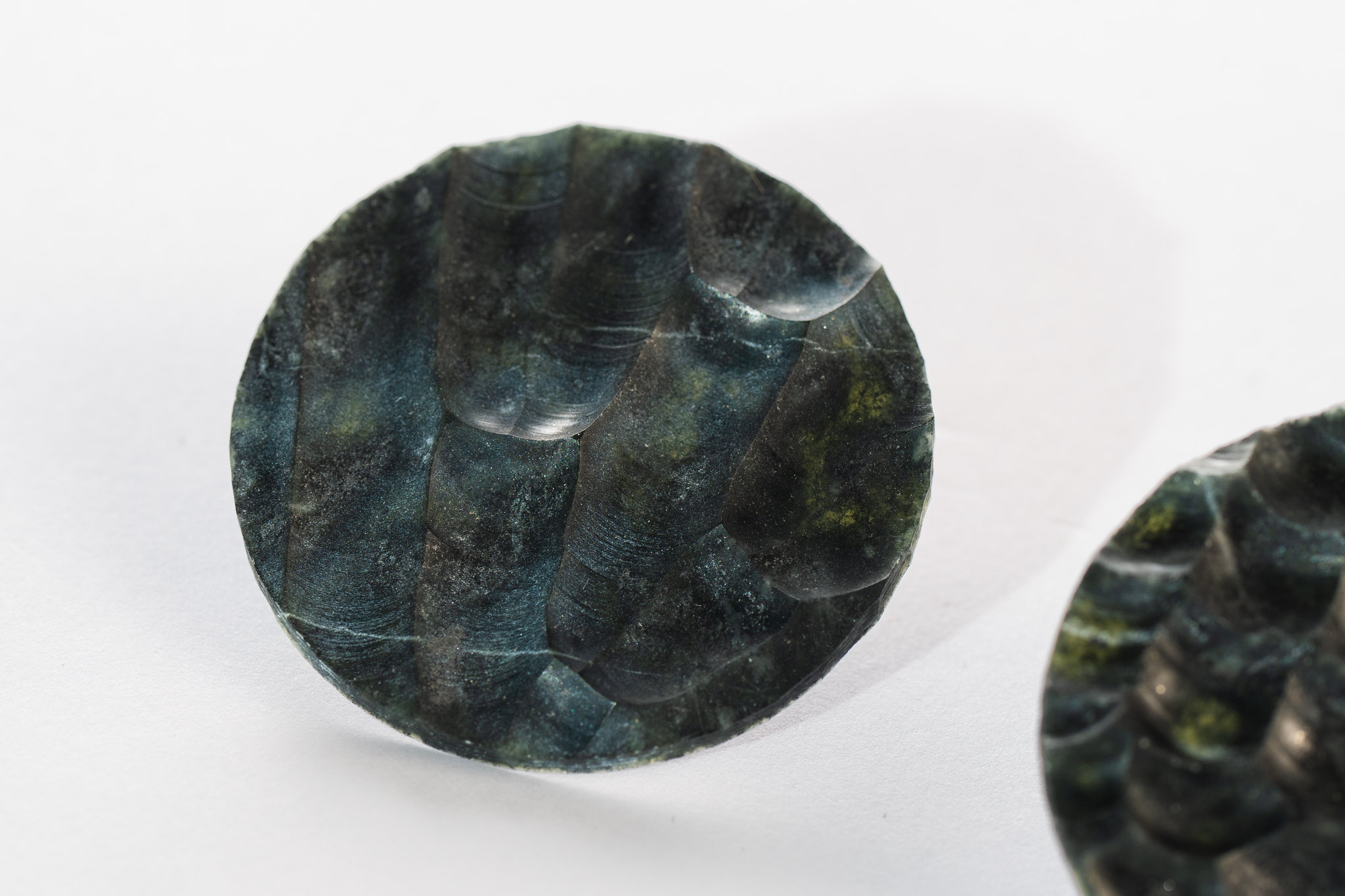Vasculature
By translating the Victoria water-lily’s vascular geometry into algorithmic design, this project choreographs carving paths through Rhino/Grasshopper to match the KUKA robotic arm’s TCP. Its refined grinding process explores a new frontier of jade artistry, revealing how mechanical precision can mirror and elevate traditional carving details, ultimately uniting computational design, natural inspiration, and robotic craftsmanship.The Victoria amazonica waterlily is renowned for its gigantic growth patterns and intricate vascular structures of its floating leaves (Box et al., 2022). These specialized vascular patterns served as a key inspiration for this project. The leaves extend outward from a central vein, following specific branching rules that create a complex interplay of longitudinal and transverse lines, elegantly merging structural efficiency with visual aesthetics. Biologically, this sophisticated vascular system supports an extensive surface area with a remarkably lightweight branching framework, achieving optimal growth efficiency within the Victoria genus.
This project adopts a digital biomimicry approach, drawing inspiration from the vascular structures of the Victoria amazonica floating leaf. Using Rhino/Grasshopper software, algorithmic and parametric design techniques were employed to mimic the branching logic of vascular growth patterns. The fabrication process utilized a KUKA robotic arm, integrated with the TACO Kuka plug-in, and a diamond grinding head to carve precise, computer-generated vascular patterns into Taiwanese black jade.
During fabrication, particular emphasis was placed on the greenish luster and translucent textural properties of Taiwanese black jade. Longitudinal and transverse growth patterns were applied to opposite sides of the jade surface, leveraging its translucency to create visually striking overlapping effects. The robotic arm’s precision path carving retained the transverse texture marks generated during the cutting process, further enhancing the biomimetic representation of vascular patterns.









Through the integration of algorithmically designed vascular patterns, precision robotic carving, and the jade’s translucent qualities, this work invites viewers to engage with the beauty of biomimicry realized through computational and robotic artistry.
Reference
Box, F., Erlich, A., Guan, J. H., & Thorogood, C. (2022). Gigantic floating leaves occupy a large surface area at an economical material cost. Science Advances, 8(6), eabg3790. https://doi.org/10.1126/sciadv.abg3790
Artist/Director: Scottie Chih-Chieh Huang
BioLogicDesign Team: Jie-Ke Pan, Deng-Feng Jiang, Yi-Hua Ho
Collaborator: Shih-Yuan Wang (Robotic Tech Developer)
---
亞馬遜王蓮 (Victoria Amazonica) 的浮葉 (Floating Leaves) 以其獨特的生長紋理和巨大的葉脈結構著名 (Box et al., 2022),其特殊的脈管系統 (Vasculature) 紋路成為本創作的重要靈感來源。這些葉片由主脈向外延展,依循特有的分支規則(Branching Rules),形成縱向與橫向交錯的分支紋理,呈現視覺線條與結構系統巧妙的融合。在生物學上,這樣複雜的脈管系統能以最輕巧的分支形狀支撐起巨大的蓮葉表面,展現該類物種極佳效率的葉脈生長形式 。
本創作以數位仿生的角度切入,透過 Rhino/Grasshopper 環境進行演算法與參數化設計,構建Victoria分支紋理的生長邏輯。以此,開發機械手臂在玉石研磨加工中的數位製造 (Digital Fabrication) 技術,將電腦生成的葉脈生長紋理運用在墨玉的研磨造形上。
加工過程中,作品特別考量台灣墨玉的綠色光澤及透光性的肌理。例如,將生物學中橫向與縱向紋理分別應用在玉片的上下兩面來雕塑紋路,運用墨玉的透光性特質,讓上下紋路相互交疊融合呈現視覺效果。此外,在整體雕刻技法上,透過將機械手臂的精密研磨加工中,產生的橫向紋理加以保留,以此呈現自然界葉脈的紋理。以此,從電腦生成葉脈紋理、手臂加工產生的特殊質感、 以及墨玉的透光性等特點整合,讓觀者獲得另類的視角體驗玉石雕刻的仿生美感。
All images and videos courtesy Scottie Chih-Chieh Huang and The BioLogicDesign Lab.